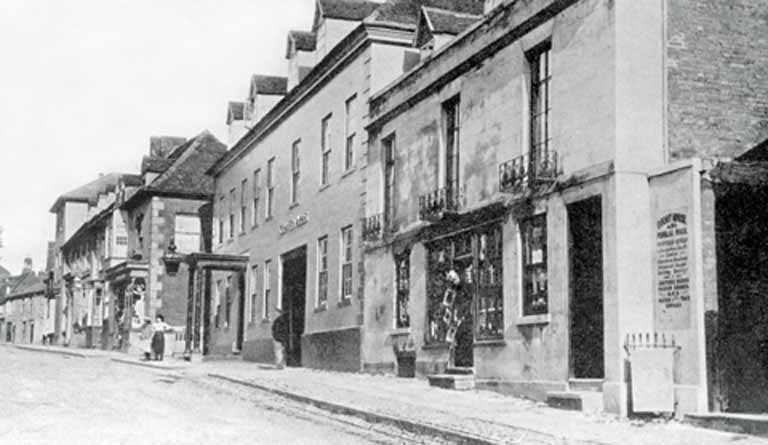Old Wills and probate make incredibly interesting reading when researching families and local places. Admittedly they will only be found for those of means, but for the more lowly of us, if we know who an ancestor worked for, then they are sometimes named in their employer’s Will as a beneficiary. The amount of the bequest can also be an indication of the esteem in which a person was held.
Southam has many early Wills, that need to be ‘transcribed’, and when they are, they reveal fascinating details. These Wills build a picture of a very interesting and vibrant pre-Victorian Southam.
The Tomes have been a Southam family since before 1647 and the English Civil War. When John Tomes died in 1792, as owner of the Craven Arms (see photograph), and with the high rate of Land Tax he was paying, we can tell that he was one of the town’s most prosperous Gentlemen.
Both of his sons, John and Edward Tomes, went into law and their Wills in the middle 19th century relate to their property and connections around Warwickshire and further afield. The youngest son Edward, who remained in Southam, followed his father in being one of the town’s most prominent Gentlemen. A lawyer, banker, chairman of town committees (both social and business) and much more. He was involved in all of Southam’s big decisions in the early 1800s, such as the Stoneythorpe Dispensary and Infirmary, situated where Warwick House is today.
Thanks to a translation of his nine-page Will by one of our members, we know that Edward wished to be buried in Southam near to his relations and “mourning rings be given to my dear wife and my dear daughter Mary and her husband Henry Thomas Chamberlayne Of Stoney Thorpe”. As well as his close relatives, he names many friends in his Will and includes where they live. Hence, we know his friends included Richard and Anna Burman of Camden Town in Middlesex, a Gentleman, and the Reverend John Banister and his wife Matilda of Alton in Hampshire. Then there is mention of his “valued friend Edmund Tompkins” who had given him a “piece of plate” which he left in remembrance of his friend to his wife.
Edward mentions three of his servants with; “the sum of fifty pounds to Joseph Soden of Bishops Itchington, Labourer; the sum of nineteen guineas to my Servant Shepherd now in my employment. To Thomas Neale my long and faithful servant the sum of one hundred and fifty pounds.”
The list of land he owned in and around Southam is extremely broad. Further still, he requested that certain yearly dividends be used to purchase such items as coal for distribution amongst the poor of Southam. He also owned shares in the canals around Southam as well as canal frontage and wharfs including Cuttle Wharf near Long Itchington, which later became part of one of the major cement works.
If anyone is interested in helping to transcribe an early Southam Will, then do please get in touch with us.
To find out more about your local history, contact Southam Heritage Collection. We are located in Tithe Place, High Street, opposite Southam Library. Please see our website www.southamheritage.org for details of our exhibitions and current opening times. Contact: 01926 613503 email southamheritage@hotmail.com and find us on Facebook: Southam Heritage Collection.


Thank you so much for this! Edward Tomes was my 4th great grandfather. Mary his daughter, my3rd GGM. The Peerage incorrectly states that Henry Thomas Chamberlayne was married to a Mary Fowles, although I have a private family tree typed up in 1919 by a Chamberlayne descendant stating that Henry Thomas married Mary Tomes, daughter of Edward. I’ve found her burial record, marriage record, and thanks to the 1841 and 1851 census have also found her baptism record, and when she was born. I had previously thought that Edward was a banker. It all makes sense now. Very grateful for your research!